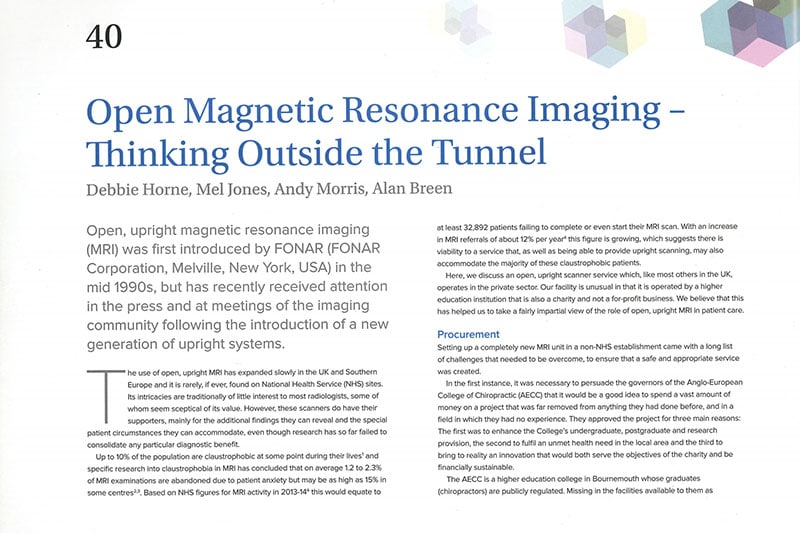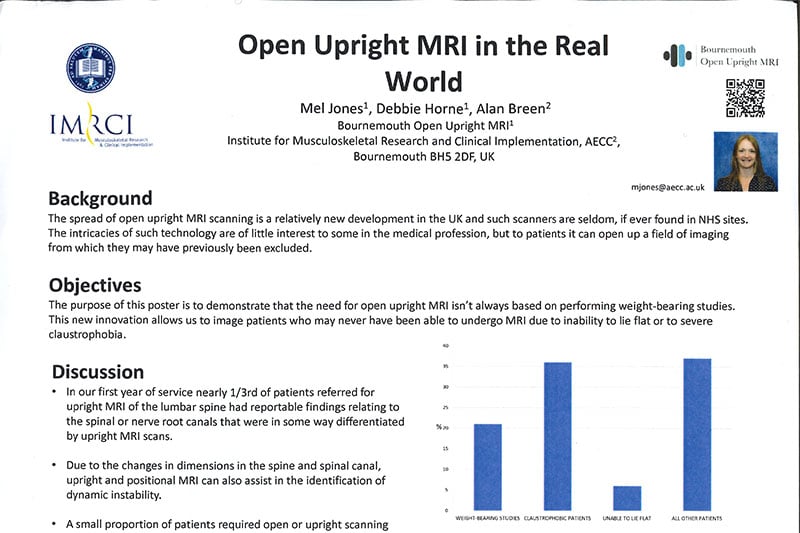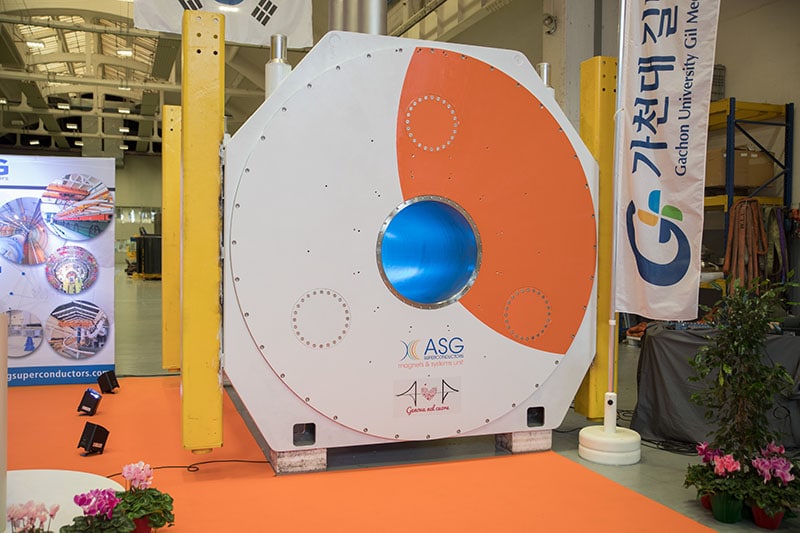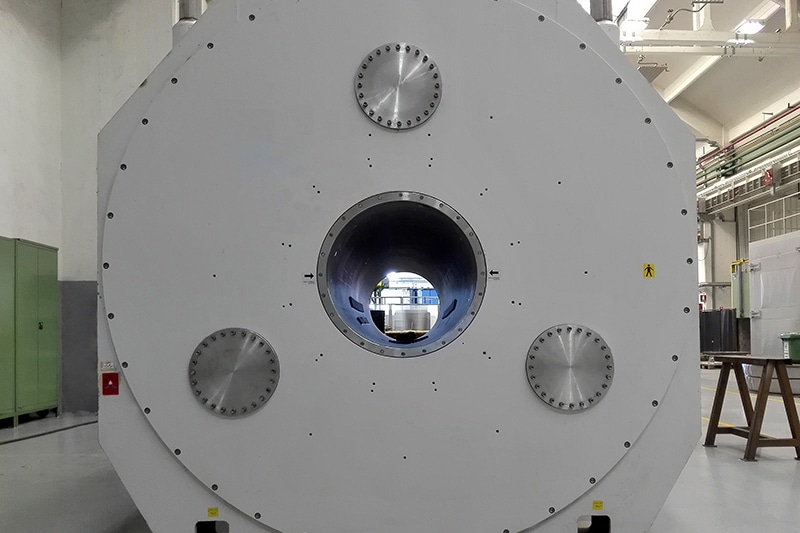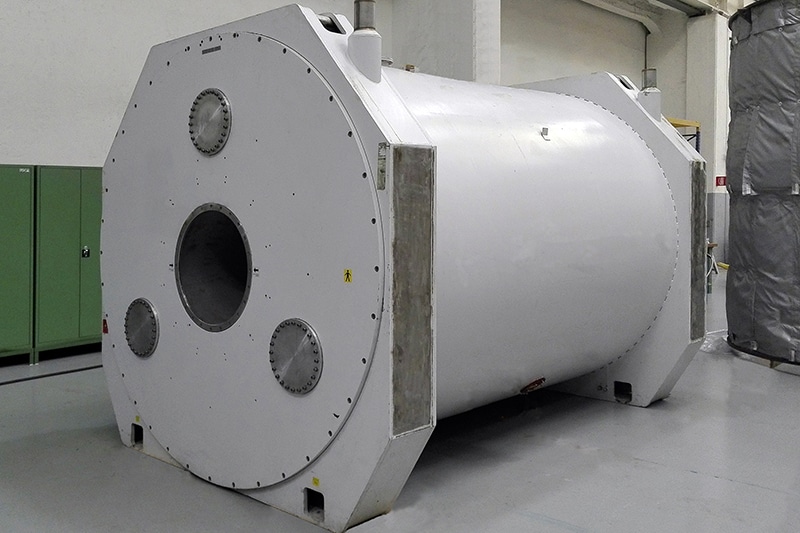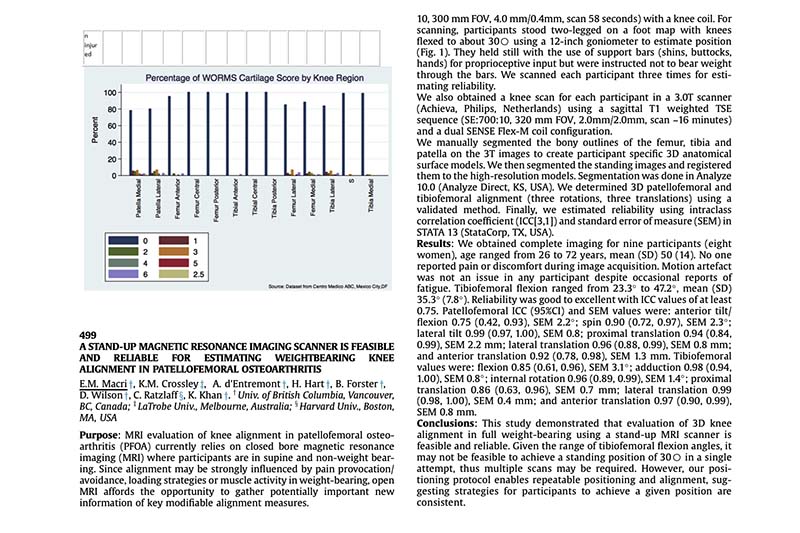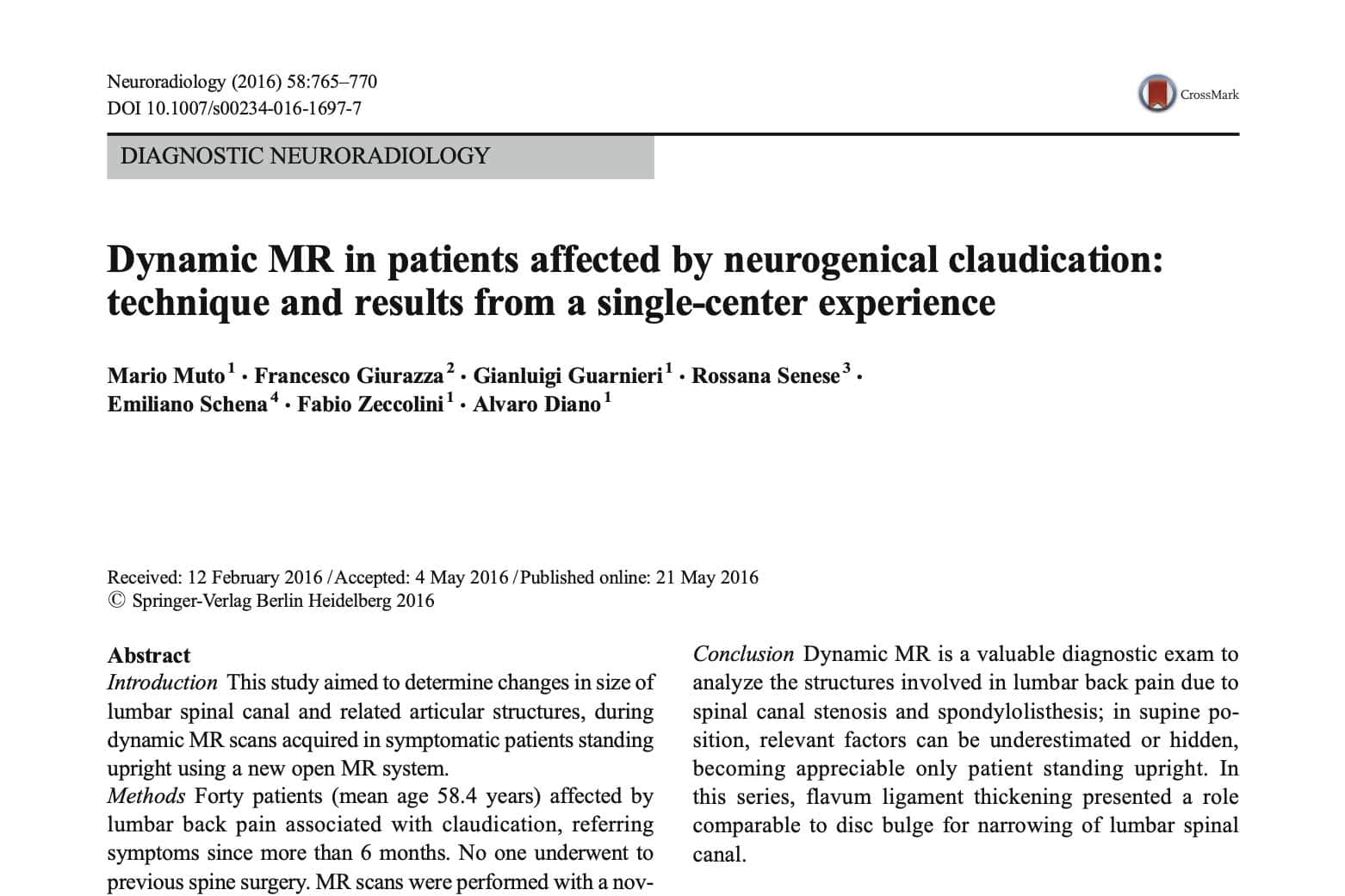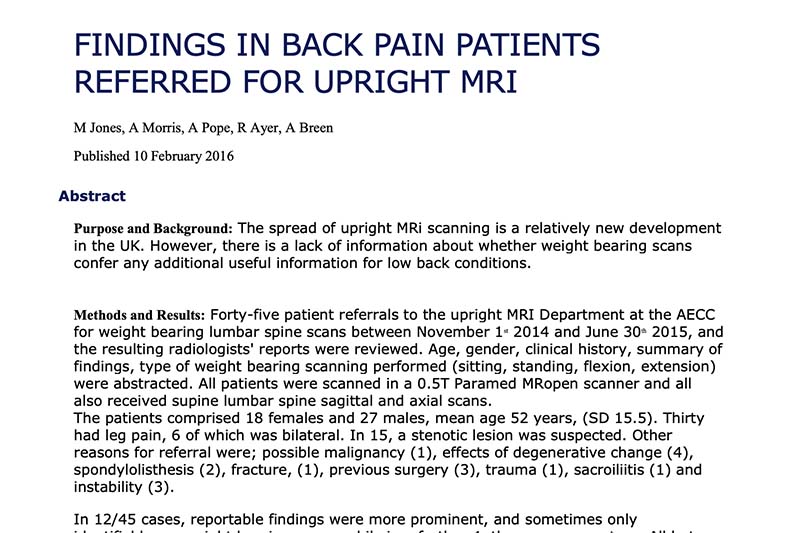“…suena obvio, pero es mejor evaluar al paciente en la posición de máximos síntomas, donde se revela la patología, que en una posición de máximo alivio del dolor…”.
“…evaluating instability patterns that may result from injuries such as Whiplash, putting patients into positions where they experience their symptoms – such as extreme ranges of flexion or extension…”
“…Gravity is a contrast agent for me. So we always start with a conventional laying-down study, so we have a baseline. Then we put the patient into an Upright position that generates pain, to gain a better understanding of what is causing the problem…”
NEWS
Open Magnetic Resonance Imaging – Thinking Outside the Tunnel
Imaging & Oncology 2017 Open Upright magnetic resonance imaging [...]
Open Upright MRI in the Real World
The spread of open upright MRI scanning is a [...]
The magnets to study the brain
ASG Superconductors has been awarded a contract by Gachon [...]
A stand-up magnetic resonance imaging scanner is feasible and reliable for estimating weight bearing knee alignment in patellofemoral osteoarthritis
MRI evaluation of knee alignment in patellofemoral osteo-arthritis (PFOA) [...]
Dynamic MR in patients affected by neurogenical claudication: technique and results from a single-center experience
This study aimed to determine changes in size oflumbar [...]
Findings In Back Pain Patients Referred For Upright MRI
Positional MRI has been developed to provide images of [...]
DESCUBRE MÁS


